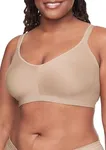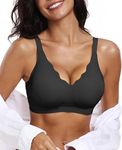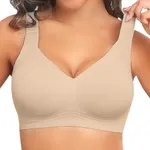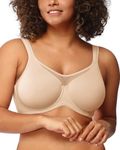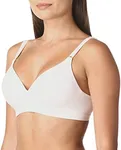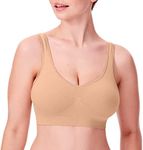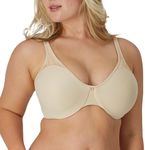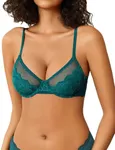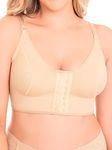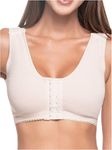Buying Guide for the Best Bras For Support And Lifts
Choosing the right bra for support and lift can significantly impact your comfort and confidence. It's essential to understand the key specifications that contribute to the overall effectiveness of a bra in providing the support and lift you need. By focusing on these specifications, you can find a bra that fits well, feels comfortable, and meets your specific needs.Band SizeThe band size is the measurement around your ribcage, just under your bust. This is crucial because the band provides most of the support in a bra. A well-fitting band should be snug but not too tight, and it should sit level around your body. To find the right band size, measure your ribcage and refer to a sizing chart. If the band rides up your back, it's too loose; if it digs in, it's too tight.
Cup SizeCup size indicates the volume of the bra cups and is essential for ensuring that your breasts are fully supported and lifted. The right cup size will encapsulate your breasts without spilling over or leaving gaps. To determine your cup size, measure the fullest part of your bust and subtract the band size measurement. The difference will help you find the correct cup size using a sizing chart.
UnderwireUnderwire bras have a thin, semi-circular wire sewn into the fabric under each cup. This feature provides additional support and helps lift the breasts. Underwire is particularly beneficial for those with larger busts or those seeking extra lift. Ensure the underwire lies flat against your ribcage and does not poke or dig into your skin.
Strap WidthStrap width can affect both comfort and support. Wider straps distribute weight more evenly and are less likely to dig into your shoulders, making them ideal for larger busts or all-day wear. Narrower straps may be suitable for smaller busts or for wearing under certain clothing styles. Adjust the straps so they are snug but not too tight, and ensure they do not slip off your shoulders.
Cup ShapeCup shape refers to the design and structure of the bra cups, which can influence the overall fit and appearance. Different shapes, such as full coverage, balconette, or plunge, offer varying levels of support and lift. Choose a cup shape that complements your breast shape and suits your wardrobe needs. For example, full coverage bras provide maximum support, while plunge bras are great for low-cut tops.
MaterialThe material of the bra affects both comfort and durability. Look for breathable, stretchy fabrics like cotton, microfiber, or moisture-wicking materials for everyday wear. For special occasions or added lift, consider bras with firmer fabrics or additional padding. The right material will feel comfortable against your skin and provide the necessary support without causing irritation.
Closure TypeClosure type refers to how the bra fastens, typically at the back with hooks and eyes, but also sometimes at the front or as a pull-on style. The closure type can impact ease of wear and adjustability. Back closures offer more adjustability with multiple hook settings, while front closures can be easier to put on and take off. Choose a closure type that suits your dexterity and comfort preferences.

